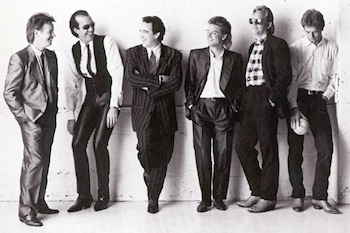Moving your song from one key to another between the verse and chorus is a great energy builder.
_____________
Download “The Essential Secrets of Songwriting” 6-eBook Bundle, and kick-start your songwriting career.
_____________
 How do you entice a listener to keep listening? What do you do as a songwriter to ensure that someone who starts listening to your song sticks with it to the end? And more importantly, how to you keep bringing them back? It all happens by creating musical excitement. The kind of excitement we’re talking about here goes by other names as well: energy, momentum, forward motion, and so on. If your songs don’t have it, they’re doomed to be lacklustre and boring, and your potential audience will go looking elsewhere for their musical entertainment.
How do you entice a listener to keep listening? What do you do as a songwriter to ensure that someone who starts listening to your song sticks with it to the end? And more importantly, how to you keep bringing them back? It all happens by creating musical excitement. The kind of excitement we’re talking about here goes by other names as well: energy, momentum, forward motion, and so on. If your songs don’t have it, they’re doomed to be lacklustre and boring, and your potential audience will go looking elsewhere for their musical entertainment.
If you were to create a line drawing that describes the basic energy level of standard pop songs, you’ll find that the verse often starts at a low energy level, and gradually builds as it proceeds. There’s an immediate bump-up of energy at the start of the chorus, maintaining that new energy level until the start of the next verse, and so on.
Here’s a map of the energy levels of a typical top-40 song:
Not every song follows this pattern, of course — that kind of predictability would be a touch boring. But it’s typical of many songs. You’ll notice that intros are often more energetic than the verse, the chorus displays even more energy, and the highest levels are saved for the bridge and final choruses.
Musical energy is usually increased by any or all of the following:
- Accompaniments moving from implied chords to full chords. An implied chord simply means that the background instrumentation is sparse, sometimes only a melody line with a bass line.
- Overall dynamic level becoming louder. This one is obvious: choruses should be louder than verses.
- Use vocal harmonies sparingly in the verse, and more in the chorus. Vocal harmonies build vocal energy.
- Move instruments higher in the chorus. Most instruments, when played higher in pitch, generate higher levels of energy.
There’s one other way to generate momentum and forward motion that’s not done as often, but can be very effective: change key for the chorus.
Many songwriters already do something similar to this, which is to use mainly minor chords for the verse, and switch to mainly major ones for the chorus:
Verse: Am Em F C Dm Em Am G ||Chorus: C F Dm G F C Dm G…
But what I want to describe here is the actual changing of key centre, so that the verse and chorus are in entirely different and unrelated keys. This works particularly well if the verse and chorus use the same (or similar) melody and chord progression.
Here’s how it works.
- Compose a melody and chord progression.
- Move it to a new key. Keep in mind that your melody needs to be singable in the new key – not too high or too low.
- Find a “connector chord” to use at the end of your melody – a chord that helps the listener make sense of the key change.
At the end of step 3, you’ll have a melody that is in one key for the verse, connects smoothly to a new key, and then repeats itself for the chorus.
There’s no rule, of course, that your verse and chorus need to be the same melody. The advantage to changing key, particularly when the key moves higher, is that it is one more way to generate energy.
A great example of this under-used energy-builder is “Stuck With You“, written by Chris Hayes and Huey Lewis. The verse progression is an old standard rock & roll progression: C Am F Dm G. The pre-chorus moves toward the minor: Am C F G A7. That A7 chord is the connector, the modulating chord that moves the music to a new key for the chorus: D Bm G Em A.
Both the verse and chorus use a very similar melody, so changing key not only adds energy, it adds a sense of freshness and newness to a tune that the listener has heard several times up to this point.
Changing key, if done the right way, and with a great connector chord, is something that most listeners won’t be aware of. They’ll simply notice the result: a boost of musical excitement. Give it a try.
____________
DOWNLOAD Gary’s songwriting e-books for your laptop/desktop












Reblogged this on I Write The Music.